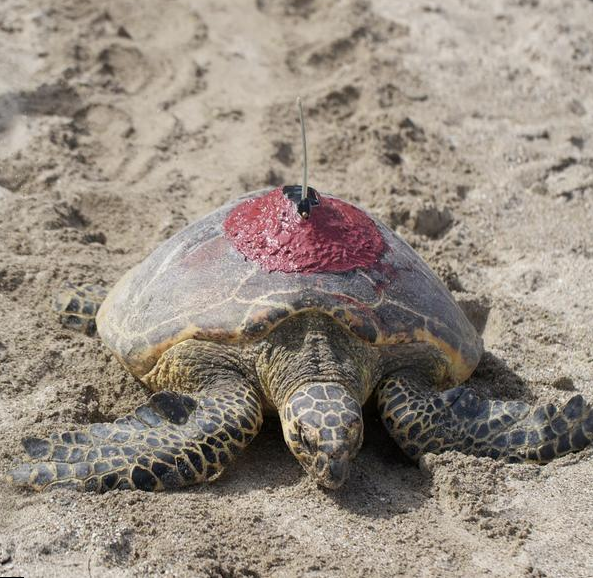Science News
Biologging
February 16, 2012

The 2012 American Association for the Advancement of Science (AAAS) meeting kicked off with a press conference about biologging… Er, bio-what?
Biologging is the technical term for tracking animals with satellite tags. The press meeting this morning specifically featured the past and future effects of tracking marine species, no surprise given the location of this year’s meeting, water-logged Vancouver, British Columbia.
Satellite tracking is vitally important to understand where marine organisms go and what they do, whether you’re talking about sea turtles traveling thousands of miles across the Pacific or spotted eagle rays heading south from Florida to Mexico.
Four scientists presented varying arguments on the successes and failures of tracking. Kristen Hart of the USGS in Florida has reviewed the impact of tracking research. Over 200 papers have been published using tracking results, but how many of those are actually getting into the hands of resource managers who make decisions that can protect species? Less than half, she reports.
Larry Crowder and Brad deYoung built on Hart’s comments by speaking about how tracking data must be used to create marine protection areas (MPAs), but not as we know them now. They are proposing shifting MPAs—protection areas that can change over time due to seasons, migration routes, population shifts, fisheries and climate change.
They also would like tracking data to improve existing MPAs. While many are successful in protecting habitats and species, others are not. “We have the tools and we should use them to define what the MPAs are for,” deYoung said. “If you cannot show any benefit, then why do it?”
Finally, David Welch spoke about biologging local British Columbia salmon, some no bigger than your finger! He stated that tracking technology has to improve in order to understand problems such as fish farms’ effects on wild populations. He would like to do specific experiments on salmon populations around Vancouver and in the Columbia River to understand more clearly what’s going on.
They all stressed how we are experiencing the early days of biologging. Tracking is a fantastic tool to protect marine animals, and now we have to use the technology in a smarter way. Crowder, a dynamic biologist from Stanford, described it as a revolution in biologging: he referenced the recent designation by NOAA of 42,000 square miles up and down the US Pacific coast to protect leatherback sea turtles. Focusing on the food of leatherbacks, Crowder said that satellite tracking played a critical role in creating these areas.
We’ll have more on this story next month in a Science in Action video with the Academy’s own J. Nichols. Stay tuned.